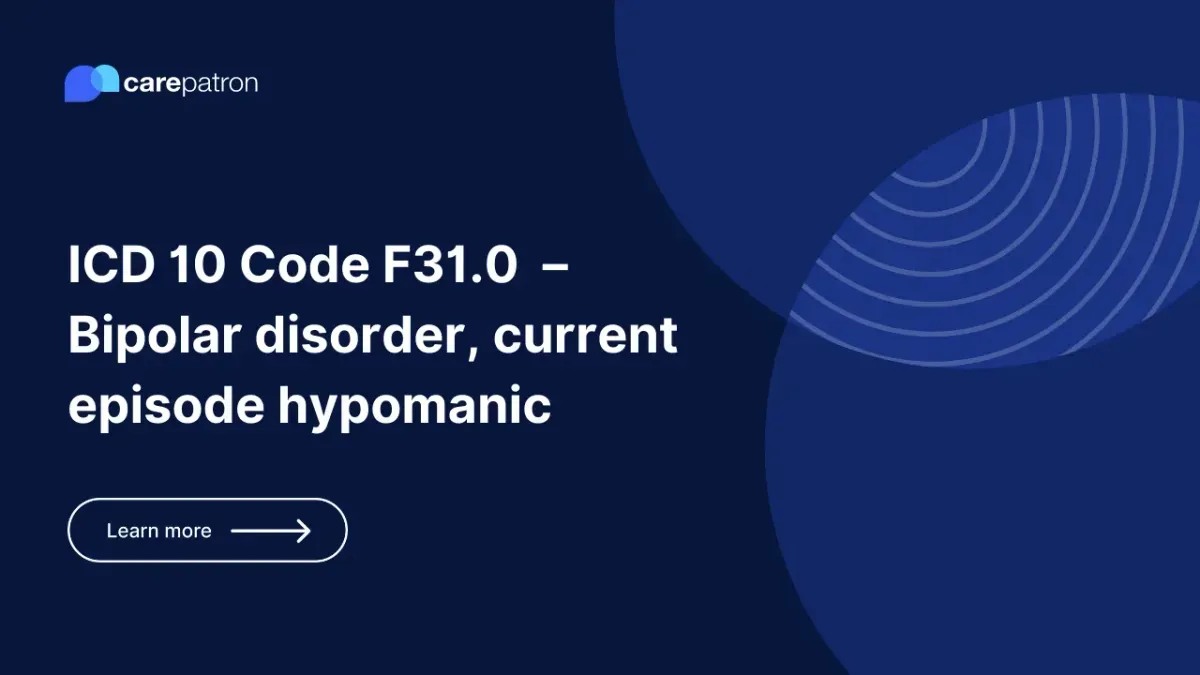
F31.0 – Bipolar disorder, current episode hypomanic
The ICD-10-CM code F31.0 diagnoses a patient with bipolar disorder who is currently having a hypomanic episode. The severity is also unspecified. Learn what this code entails in this short guide.
Use Code
Commonly asked questions
Yes, this ICD-10 code is billable.
You use it when your patient is confirmed to have bipolar disorder and they’re currently having a hypomanic episode.
Treatment for this disorder will depend on the severity, but normally, treatment includes medication (mood stabilizers and antipsychotics) and psychotherapy. Severe cases may involve hospitalization.
EHR and practice management software
Get started for free
*No credit card required
Free
$0/usd
Unlimited clients
Telehealth
1GB of storage
Client portal text
Automated billing and online payments
